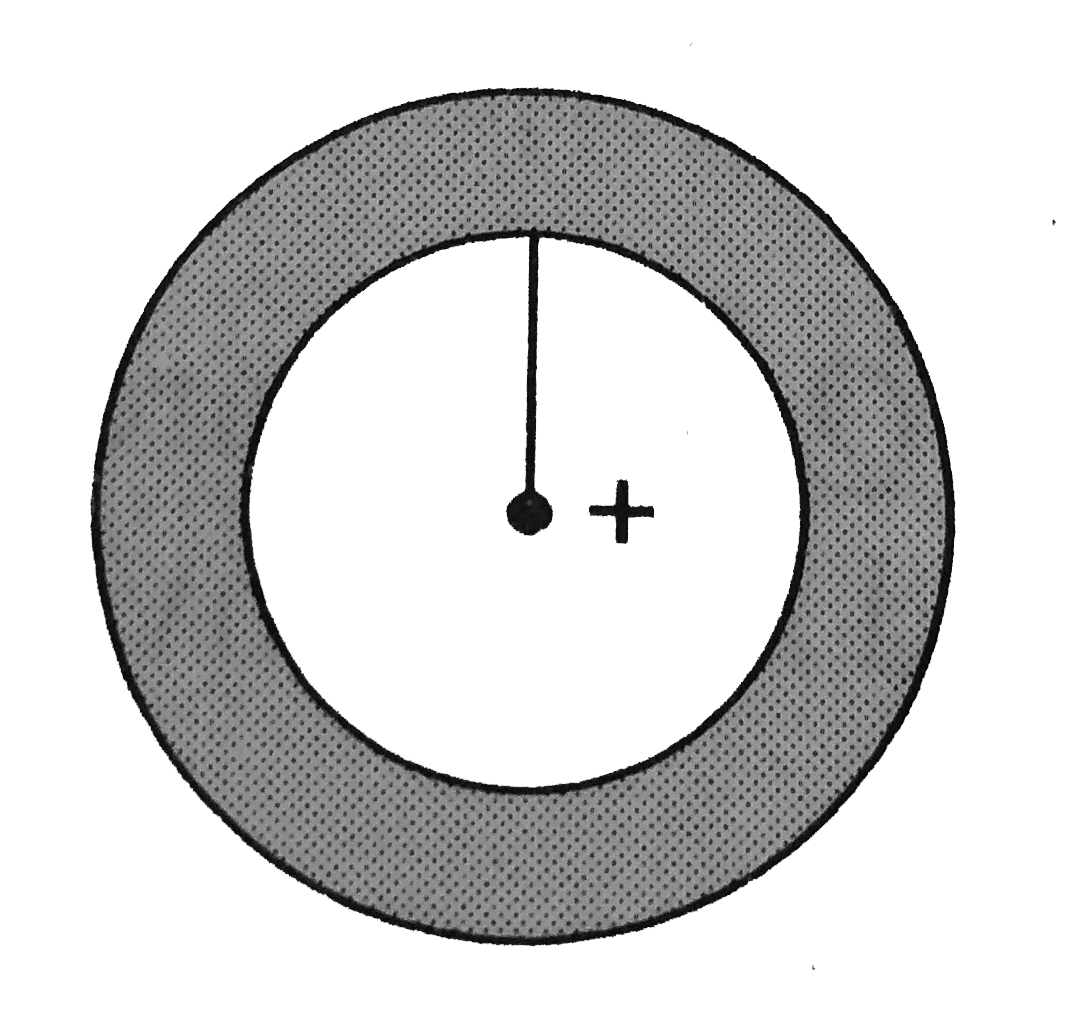When an ebonite rod is rubbed with wool, the rod becomes negatively charged.
Step-by-Step Solution:
1. Understanding the Materials:
- Ebonite is a type of hard rubber that is known for its ability to gain electrons easily.
- Wool is a material that tends to lose electrons when rubbed against other materials.
2. Initial Charge State:
- Before rubbing, both the ebonite rod and the wool are electrically neutral, meaning they have an equal number of positive and negative charges.
3. Rubbing the Rod with Wool:
- When the ebonite rod is rubbed with wool, a transfer of electrons occurs.
- The electrons from the wool are transferred to the ebonite rod.
4. Charge Acquisition:
- As the ebonite rod gains electrons, it becomes negatively charged because it now has more electrons than protons.
- Conversely, the wool loses electrons and thus becomes positively charged due to having more protons than electrons.
5. Conservation of Charge:
- According to the law of conservation of charge, the total charge before and after rubbing must remain the same.
- Since the ebonite rod gains negative charge, the wool must lose an equal amount of charge, resulting in a positive charge.
6. Conclusion:
- Therefore, the statement that "when an ebonite rod is rubbed with wool, the rod becomes negatively charged" is true.
---
- Ebonite is a type of hard rubber that is known for its ability to gain electrons easily.
- Wool is a material that tends to lose electrons when rubbed against other materials.
- Before rubbing, both the ebonite rod and the wool are electrically neutral, meaning they have an equal number of positive and negative charges.
- When the ebonite rod is rubbed with wool, a transfer of electrons occurs.
- The electrons from the wool are transferred to the ebonite rod.
- As the ebonite rod gains electrons, it becomes negatively charged because it now has more electrons than protons.
- Conversely, the wool loses electrons and thus becomes positively charged due to having more protons than electrons.
- According to the law of conservation of charge, the total charge before and after rubbing must remain the same.
- Since the ebonite rod gains negative charge, the wool must lose an equal amount of charge, resulting in a positive charge.
- Therefore, the statement that "when an ebonite rod is rubbed with wool, the rod becomes negatively charged" is true.
Topper's Solved these Questions
- ELECTRICITY BOOK - ICSECHAPTER - ELECTRICITY EXERCISE - Exercises (Section II) Distinguish between the following
6 Videos
- ELECTRICITY BOOK - ICSECHAPTER - ELECTRICITY EXERCISE - Exercises (Section II) Short answer questions
8 Videos
- ELECTRICITY BOOK - ICSECHAPTER - ELECTRICITY EXERCISE - Exercises (Section I) Choose the correct option to fill in the blank
7 Videos
- ENERGYBOOK - ICSECHAPTER - ENERGYEXERCISE - THEME ASSIGNMENT
4 Videos
Similar Questions
Knowledge Check
Assertion : When we rub a glass rod with silk, the rod gets positively charged and the silk gets negatively charged.
Reason : On rubbing, electrons from silk cloth move to the glass rod.AIf both assertion and reason are true and reason is the correct explanation of assertion.BIf both assertion and reason are true but reason is not the correct explanation of assertion.CIf assertion is true but reason is false.DIf both assertion and reason are false.
When a glass rod is rubbed with silk, it
View SolutionWhen an ebonite rod is rubbed with cat's skin, the cat's skin develops a charge which is :
View SolutionTwo bodies are charged by rubbing one against the other. During the process, one becomes positively charged while the other becomes negatively charged. Then
View SolutionWhen a negatively charged ebonite rod is brought near a negatively charged and freely suspended ball, then the ball :
View SolutionIf an object made of substance A is rubbed with an object made of substance B, then A becomes positively charged and B becomes negatively charged. If however, an object made of substance C, then A becomes negatively charged, What will happen if an object made of substance B is rubbed against an object made of substance C?
(a) B becomes positively charged and C becomes positively
(b) B becomes positively charged and C becomes negatively charged.
(c ) B becones negatively charged and C becomes positively charged.
(d) B becomes negatively charged and C becomes negatively charged.
View SolutionWhen an atom loses its electrons, it becomes negatively charged and is called a negative ion.
View SolutionAn electrically isolated hollow (initially uncharged), conducting sphere has a small positively charged ball suspended by an insulating rod from its inside surface, see diagram

This causes the inner surface of the sphere to become negatively charged. When the ball is centred in the sphere the electric field outside the conducting spehere is
View Solution
